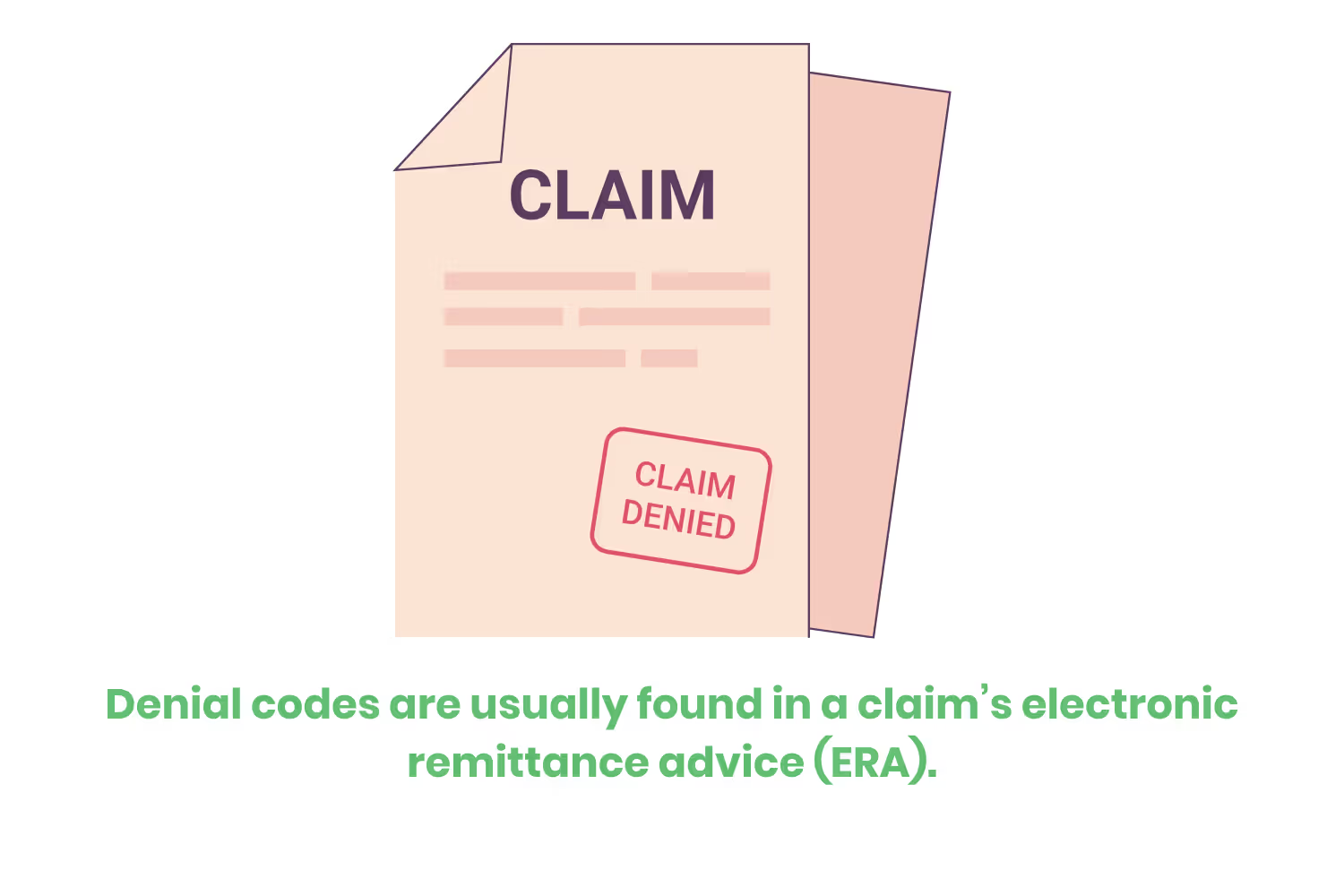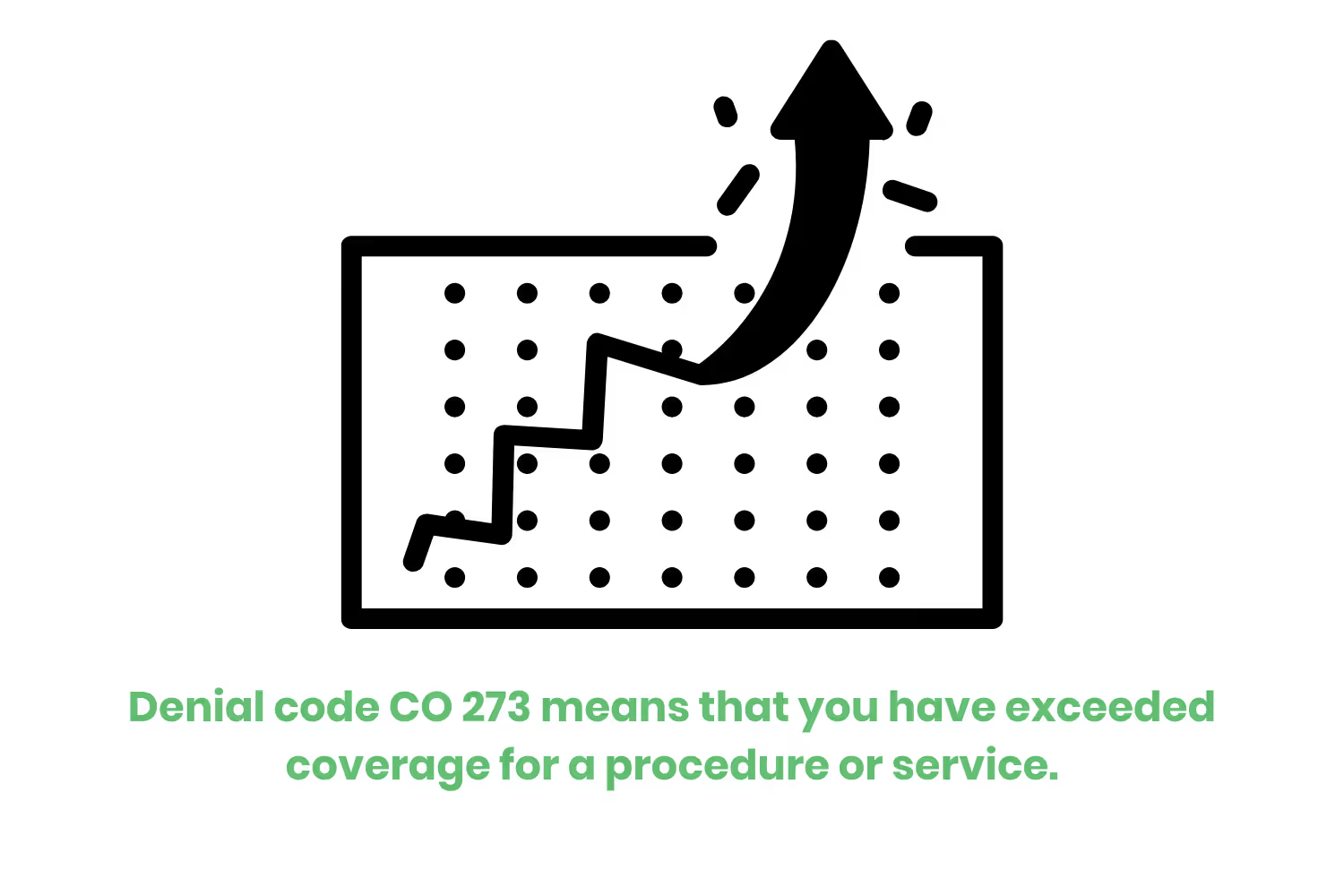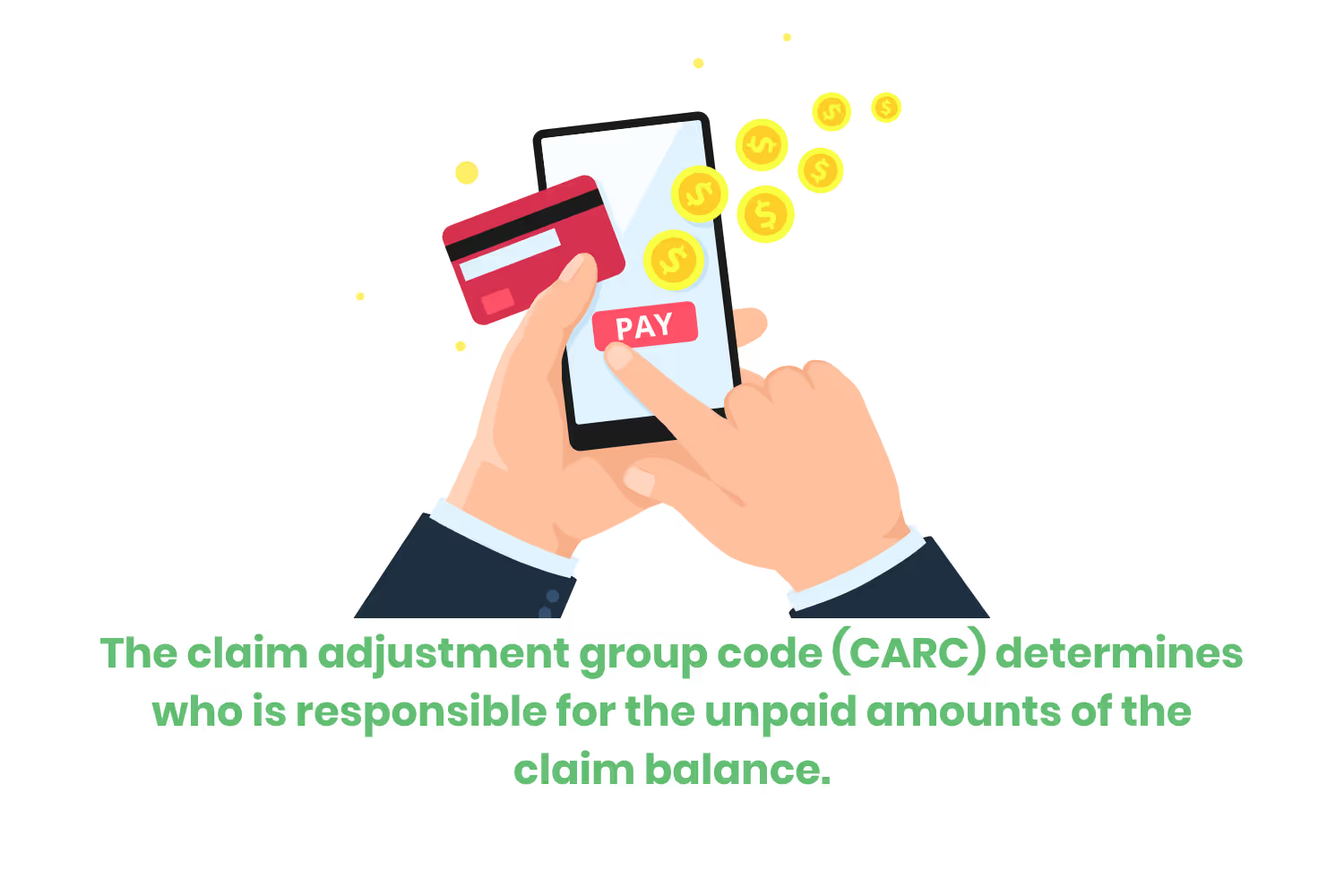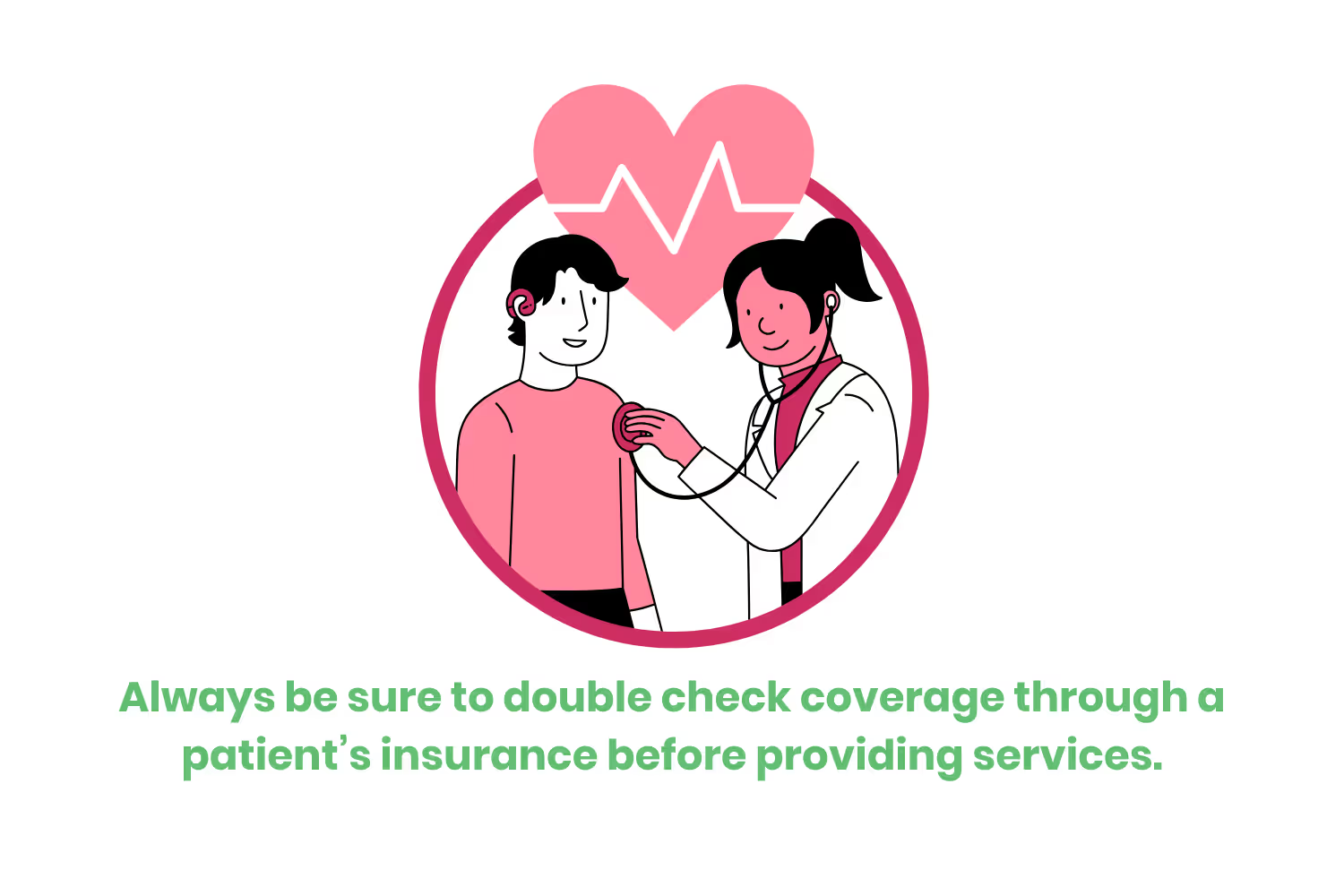CO 273 Denial Code: An Ultimate Guide
There are a few common denial codes worth knowing, one of them being denial code CO 273. Today we will go over what this code means, how to prevent it, and what to do if you need to address it.

Up to 49% of medical claims face denials due to common reasons. Denial codes are an unfortunate truth when it comes to working in medical billing and coding. While it is impossible to avoid them altogether, you can cut down on your denial rates by taking certain steps.

Training and educating your billing and coding team is essential for all aspects of the job. But especially when it comes to avoiding denial codes. Being able to prevent the denial before it happens is ideal, as it wastes time and money to have to appeal to them.
There are a few common denial codes worth knowing, one of them being denial code CO 273. Today we will go over what this code means, how to prevent it, and what to do if you need to address it.
What is a Denial Code?
Denial codes are every medical biller’s worst nightmare. Okay, maybe that is being a bit dramatic. But when it comes to medical billing and coding, they are something you don’t want to deal with often. These codes are what health insurance companies assign to claims that they cannot process. Then, they send the claim back to the provider for reassessment. It is then that the medical billing team must rework the claim, based on the notes given to them by the payer, and fix any errors made. Denial codes are usually found in a claim’s electronic remittance advice (ERA).

Avoiding denial codes completely is out of the question. At the end of the day, it is part of the job. However, too many of them can negatively affect your bottom line. That’s why businesses track their denial rates to make sure they at least stay consistently low. Any spikes in claim denials will inherently lead to monetary loss. So it’s key to know your repeat offenders. Enter denial code CO 273. One of the many codes that medical billing teams tend to regularly. Let’s take a look at what this code means.
What is Denial Code CO 273?
Alright, now that you know the basics of what a denial claim is, let’s get into specifics. Specifically, specify the specifics of denial code CO 273… Anyway, now that I got that out of my system, denial code CO 273 means that you have exceeded coverage for a procedure or service. This is according to set healthcare coverage or guidelines. Payers use this code when they determine that the service or procedure is not covered by a patient’s insurance plan, or it exceeds a payer's allowed limits or restrictions.

The CO in CO 273 stands for “contractual obligation”. This claim adjustment group code (CARC) determines who is responsible for the unpaid amounts of the claim balance. CO refers to the agreed-upon amount between payers and providers. So long as you are in-network with the payer. The patient is not responsible for this amount.
Receiving this denial code means that the healthcare provider now needs to either adjust the claim or possibly explore alternative options for payment. But remember that prevention is the best medicine. Let’s take a look at some common reasons billers run into CO 273.
What Causes Denial Code CO 273?
There are a few causes to keep in mind when it comes to CO 273. To avoid this denial, it is best to familiarize yourself with them! Lack of prior authorization can often be the culprit of these pesky claim denials. Along a similar vein is performing a non-covered service. Patients who receive services that are not covered by their insurance are likely to cause a claim denial. Always be sure to double-check coverage through a patient’s insurance beforehand.

Another common cause is that you, as the patient, already reached the maximum of benefits available. You may have also sought care under an out-of-network provider. Or, it could be the fault of the billing team. Sometimes, errors in coding or documentation are enough to trigger denial code CO 273. For example, if the documentation provided does not support the medical necessity, you might receive this claim denial.
You may also receive denial code CO 273 if you surpass the payer’s time limit. Some insurances have certain time limitations depending on service or procedure. Finally, you can receive denial code CO 273 if there are issues with the coordination of benefits (COB). Specifically, if the patient has multiple insurance plans. If there is confusion or miscommunication between primary and secondary services, that could cause a claim denial.
How to Mitigate CO 273
Mitigating this denial code is simple once you know what causes it. Essentially, take that list of common causes, and practice preventative measures to avoid them. We will start with the first common cause: lack of insurance coverage. Before rendering services, be sure to conduct eligibility verification. You can contact the patient’s insurance carrier directly to double-check this coverage. Or you can use an automatic eligibility verification tool. Also, be sure to always obtain prior authorization when required.

Reviewing the medical necessity of procedures and services before billing for them is another important tip to remember. Attaching appropriate documentation to back up this need for service is key. You can review a patient’s existing medical record to argue whether a service is necessary, too. Doing all of this helps you to avoid denials based on exceeding coverage.
Make sure you not only keep open communication between you and the payers but between your staff, too. An emphasis on training and education for your team will help to streamline your billing workflow. Ensuring your billers understand the specific requirements between different payers means regular training on insurance coverage and program guidelines.
Addressing Denial Code CO 273
So let’s say you do your best to avoid this denial code, but that still isn’t enough. The next thing you know, you are looking at denial code CO 273. Don’t panic! There are steps you can take to quickly remedy this situation. First, review the patient’s insurance policy. By doing this, you can quickly determine the reason for the denial code. This shows any potential errors or discrepancies the claim may have.

Errors may have to do with the demographic information, dates of service, procedure codes, etc. Double-check all of your information while reviewing your claim denial. Correct any errors before resubmitting.
Gather more supporting documentation if necessary. Proving medical necessity can look like providing physician notes, test results, and treatment plans. If an appeal is necessary, follow the specific appeal process outlined by the insurance company. Include all supporting documentation you have and be sure to keep an eye on the status of that appeal. Follow up with the insurance company to ensure your appeal is being processed promptly.
Conclusion
Denial code CO 273 is common enough that you should familiarize yourself with the tips and tricks mentioned in this blog. By doing so, you can significantly reduce their occurrence. Being able to properly handle this claim denial requires a thorough understanding of:
- The patient's insurance policy.
- Accurate claim submission.
- Strong supporting documentation.
- A proactive approach to the appeal process.
Comprehensive billing and coding training along with open communication are two essential elements for a successful billing process. Addressing claim denials systematically keeps your revenue cycle running smoothly. But learning how to prevent them before they even happen is best. The time you put into preventing these denial codes will pay off in your bottom line.
Emphasize your product's unique features or benefits to differentiate it from competitors
In nec dictum adipiscing pharetra enim etiam scelerisque dolor purus ipsum egestas cursus vulputate arcu egestas ut eu sed mollis consectetur mattis pharetra curabitur et maecenas in mattis fames consectetur ipsum quis risus mauris aliquam ornare nisl purus at ipsum nulla accumsan consectetur vestibulum suspendisse aliquam condimentum scelerisque lacinia pellentesque vestibulum condimentum turpis ligula pharetra dictum sapien facilisis sapien at sagittis et cursus congue.
- Pharetra curabitur et maecenas in mattis fames consectetur ipsum quis risus.
- Justo urna nisi auctor consequat consectetur dolor lectus blandit.
- Eget egestas volutpat lacinia vestibulum vitae mattis hendrerit.
- Ornare elit odio tellus orci bibendum dictum id sem congue enim amet diam.
Incorporate statistics or specific numbers to highlight the effectiveness or popularity of your offering
Convallis pellentesque ullamcorper sapien sed tristique fermentum proin amet quam tincidunt feugiat vitae neque quisque odio ut pellentesque ac mauris eget lectus. Pretium arcu turpis lacus sapien sit at eu sapien duis magna nunc nibh nam non ut nibh ultrices ultrices elementum egestas enim nisl sed cursus pellentesque sit dignissim enim euismod sit et convallis sed pelis viverra quam at nisl sit pharetra enim nisl nec vestibulum posuere in volutpat sed blandit neque risus.

Use time-sensitive language to encourage immediate action, such as "Limited Time Offer
Feugiat vitae neque quisque odio ut pellentesque ac mauris eget lectus. Pretium arcu turpis lacus sapien sit at eu sapien duis magna nunc nibh nam non ut nibh ultrices ultrices elementum egestas enim nisl sed cursus pellentesque sit dignissim enim euismod sit et convallis sed pelis viverra quam at nisl sit pharetra enim nisl nec vestibulum posuere in volutpat sed blandit neque risus.
- Pharetra curabitur et maecenas in mattis fames consectetur ipsum quis risus.
- Justo urna nisi auctor consequat consectetur dolor lectus blandit.
- Eget egestas volutpat lacinia vestibulum vitae mattis hendrerit.
- Ornare elit odio tellus orci bibendum dictum id sem congue enim amet diam.
Address customer pain points directly by showing how your product solves their problems
Feugiat vitae neque quisque odio ut pellentesque ac mauris eget lectus. Pretium arcu turpis lacus sapien sit at eu sapien duis magna nunc nibh nam non ut nibh ultrices ultrices elementum egestas enim nisl sed cursus pellentesque sit dignissim enim euismod sit et convallis sed pelis viverra quam at nisl sit pharetra enim nisl nec vestibulum posuere in volutpat sed blandit neque risus.
Vel etiam vel amet aenean eget in habitasse nunc duis tellus sem turpis risus aliquam ac volutpat tellus eu faucibus ullamcorper.
Tailor titles to your ideal customer segment using phrases like "Designed for Busy Professionals
Sed pretium id nibh id sit felis vitae volutpat volutpat adipiscing at sodales neque lectus mi phasellus commodo at elit suspendisse ornare faucibus lectus purus viverra in nec aliquet commodo et sed sed nisi tempor mi pellentesque arcu viverra pretium duis enim vulputate dignissim etiam ultrices vitae neque urna proin nibh diam turpis augue lacus.




